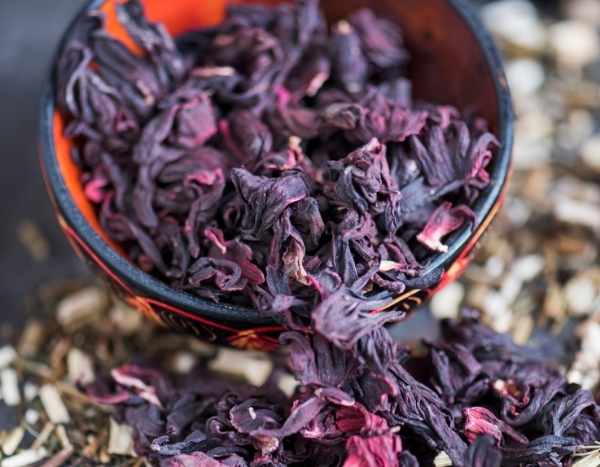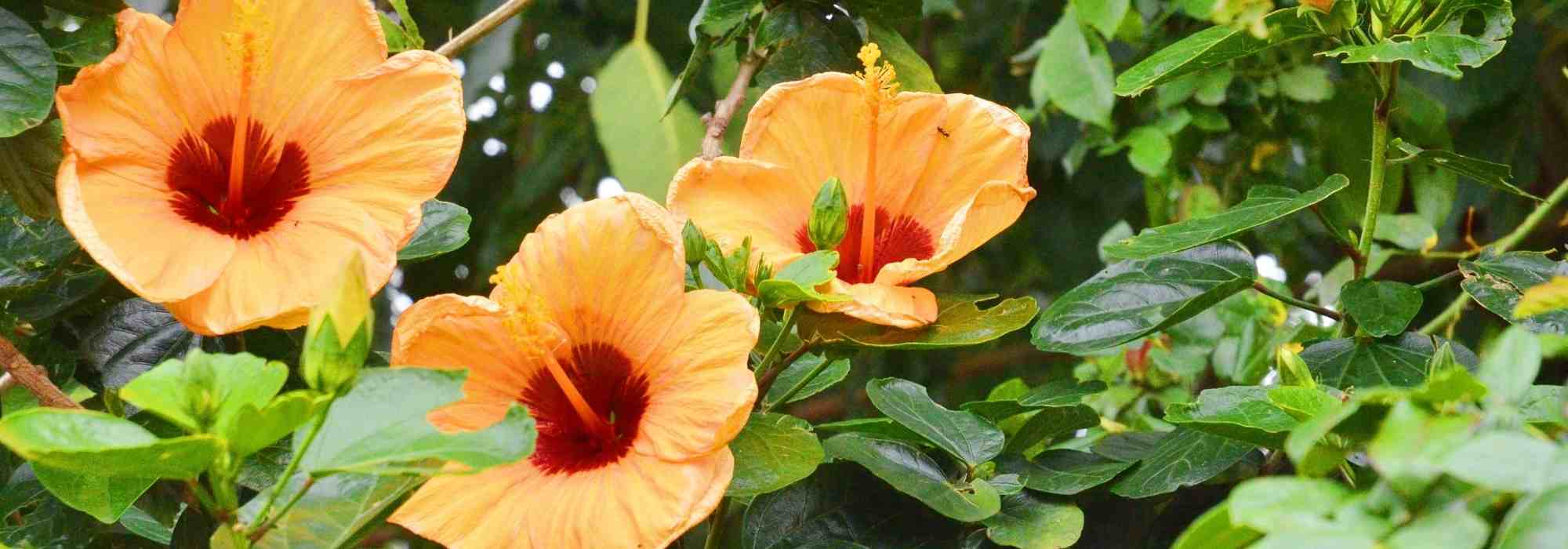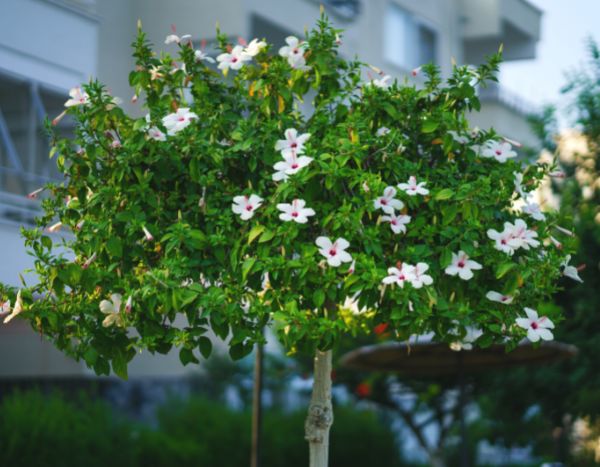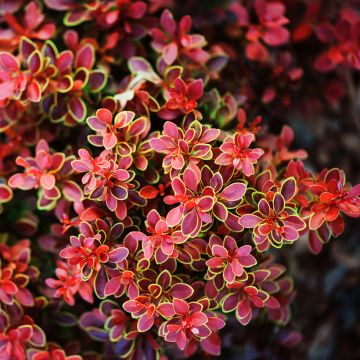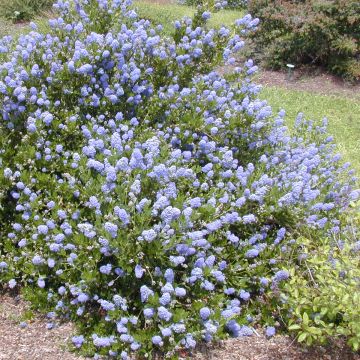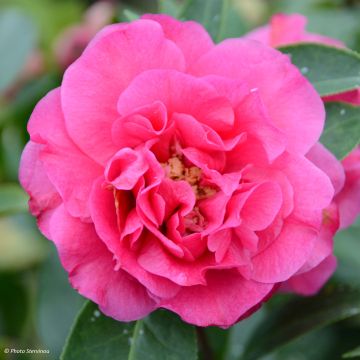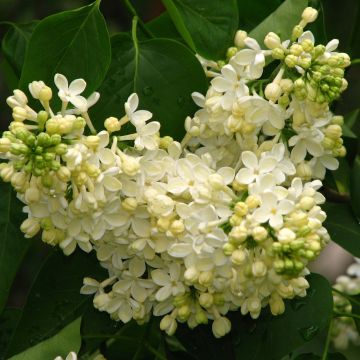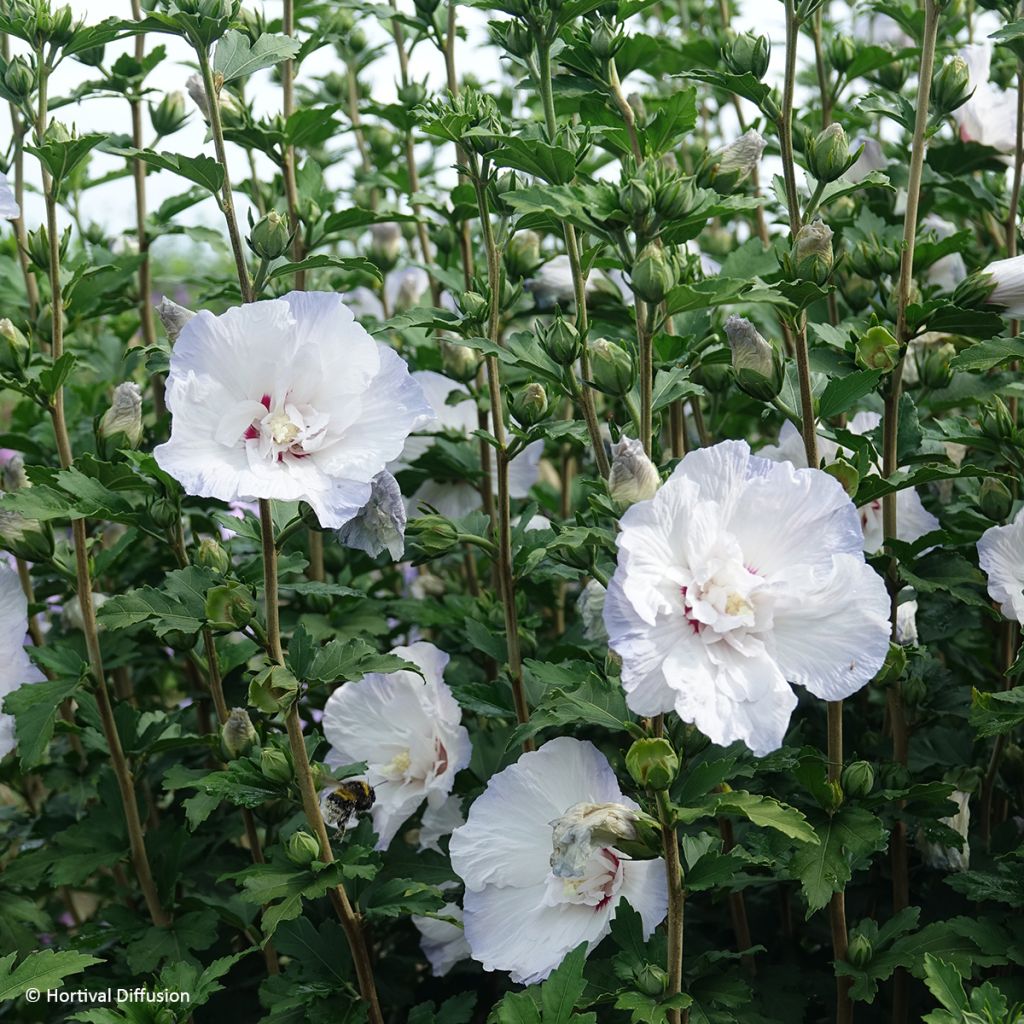

Hibiscus syriacus Igloo - Rose of Sharon
Hibiscus syriacus Igloo - Rose of Sharon
Hibiscus syriacus 'Minsycbb2b' Igloo
Common Hibiscus, Rose of Sharon, Syrian ketmia, St Joseph's rod, Garden Hibiscus
Special offer!
Receive a €20 voucher for any order over €90 (excluding delivery costs, credit notes, and plastic-free options)!
1- Add your favorite plants to your cart.
2- Once you have reached €90, confirm your order (you can even choose the delivery date!).
3- As soon as your order is shipped, you will receive an email containing your voucher code, valid for 3 months (90 days).
Your voucher is unique and can only be used once, for any order with a minimum value of €20, excluding delivery costs.
Can be combined with other current offers, non-divisible and non-refundable.
Home or relay delivery (depending on size and destination)
Schedule delivery date,
and select date in basket
This plant carries a 24 months recovery warranty
More information
We guarantee the quality of our plants for a full growing cycle, and will replace at our expense any plant that fails to recover under normal climatic and planting conditions.
Would this plant suit my garden?
Set up your Plantfit profile →
Description
Hibiscus syriacus ‘Igloo’ is an exceptional shrub distinguished by its large double flowers edged in blue against a white background. This rose of Sharon combines elegance and robustness: its strong, upright branches create a well-structured silhouette. Vigorous, easy to care for, and particularly floriferous, ‘Igloo’ stands out in the garden, but also in a large pot. Ideal for a medium flowering hedge or to enhance a small garden as a standalone specimen.
Belonging to the Malvaceae family, Hibiscus syriacus ‘Igloo’ is a cultivar selected in France by Hortival Diffusion in 2024 for its exceptional ornamental qualities. It is distinguished by its large double flowers, white with blue edges, its prolonged flowering period, and its ability to rebloom quickly. The species name syriacus refers to an old classification error, as the type species is native to East Asia, more precisely mainland China and Taiwan, where it grows in open areas, clearings, or dry, well-exposed slopes.
Rose of Sharon 'Igloo' has an upright, bushy habit. In the ground, at 10 years old, it reaches approximately 3 m in height with a spread of 1.5 m. In a pot, its size is reduced, around 1.5 to 2 m, depending on growing conditions. Its growth is moderate to fast, and the bush flowers on the current year's shoots. The matt dark green leaves are alternate, trilobed or ovate, 5 to 10 cm long and deciduous. The erect, grey, and smooth stems give the bush a robust silhouette. It will flower from July to September, sometimes until October, depending on the climate. The double flowers are 8 to 10 cm wide. They feature white petals edged with pale blue, a colouration accentuated by cool nights, surrounding a reddish-purple heart. Each flower lasts only one or two days, but the plant reblooms continuously as it produces virtually no seed.
This contemporary cultivar is part of an ancient tradition: Hibiscus syriacus has been cultivated in Europe since the 17th century and holds significant symbolic importance in South Korea. With this ‘Igloo’ cultivar, Hortival Diffusion offers a modern version that is very floriferous, well-structured, and suited to the constraints of today's gardens.
Rose of Sharon 'Igloo' enjoys sun and long summers, but it prefers a soil that does not dry out too much in July-August. This wonderful variety deserves to be placed as a standalone specimen in a small garden. It can also be planted in a medium-height hedge, with hibiscus 'Totus Albus' with pure white flowers and 'Azzuri', single and blue. You could also mix it with large rugosa roses and the crape myrtle 'Black Solitaire' (Black Diamond) 'Blush' with white flowers and very dark foliage.
Plant habit
Flowering
Foliage
Botanical data
Hibiscus
syriacus
'Minsycbb2b' Igloo
Malvaceae
Common Hibiscus, Rose of Sharon, Syrian ketmia, St Joseph's rod, Garden Hibiscus
Hibiscus syriacus 'Minsycbb2b'
Cultivar or hybrid
Planting and care
Plant Hibiscus syriacus 'Igloo' in spring or autumn, in a sunny position in the north, or partial shade in southern regions, in well-drained, loosened, fertile soil. Lime is well tolerated. Dig a generous, deep planting hole, adding some compost and sand to your garden soil to improve soil quality if needed. Water thoroughly after planting. Don't worry if growth doesn't start until May, this is completely normal for this bush.
While rose mallows tolerate dry soils in summer once well-rooted, they are more beautiful and floriferous in soil that retains moisture during summer. Mulch around the base of these generous bushes if needed.
Planting period
Intended location
Care
Planting & care advice
This item has not been reviewed yet - be the first to leave a review about it.
Similar products
Haven't found what you were looking for?
Hardiness is the lowest winter temperature a plant can endure without suffering serious damage or even dying. However, hardiness is affected by location (a sheltered area, such as a patio), protection (winter cover) and soil type (hardiness is improved by well-drained soil).

Photo Sharing Terms & Conditions
In order to encourage gardeners to interact and share their experiences, Promesse de fleurs offers various media enabling content to be uploaded onto its Site - in particular via the ‘Photo sharing’ module.
The User agrees to refrain from:
- Posting any content that is illegal, prejudicial, insulting, racist, inciteful to hatred, revisionist, contrary to public decency, that infringes on privacy or on the privacy rights of third parties, in particular the publicity rights of persons and goods, intellectual property rights, or the right to privacy.
- Submitting content on behalf of a third party;
- Impersonate the identity of a third party and/or publish any personal information about a third party;
In general, the User undertakes to refrain from any unethical behaviour.
All Content (in particular text, comments, files, images, photos, videos, creative works, etc.), which may be subject to property or intellectual property rights, image or other private rights, shall remain the property of the User, subject to the limited rights granted by the terms of the licence granted by Promesse de fleurs as stated below. Users are at liberty to publish or not to publish such Content on the Site, notably via the ‘Photo Sharing’ facility, and accept that this Content shall be made public and freely accessible, notably on the Internet.
Users further acknowledge, undertake to have ,and guarantee that they hold all necessary rights and permissions to publish such material on the Site, in particular with regard to the legislation in force pertaining to any privacy, property, intellectual property, image, or contractual rights, or rights of any other nature. By publishing such Content on the Site, Users acknowledge accepting full liability as publishers of the Content within the meaning of the law, and grant Promesse de fleurs, free of charge, an inclusive, worldwide licence for the said Content for the entire duration of its publication, including all reproduction, representation, up/downloading, displaying, performing, transmission, and storage rights.
Users also grant permission for their name to be linked to the Content and accept that this link may not always be made available.
By engaging in posting material, Users consent to their Content becoming automatically accessible on the Internet, in particular on other sites and/or blogs and/or web pages of the Promesse de fleurs site, including in particular social pages and the Promesse de fleurs catalogue.
Users may secure the removal of entrusted content free of charge by issuing a simple request via our contact form.
The flowering period indicated on our website applies to countries and regions located in USDA zone 8 (France, the United Kingdom, Ireland, the Netherlands, etc.)
It will vary according to where you live:
- In zones 9 to 10 (Italy, Spain, Greece, etc.), flowering will occur about 2 to 4 weeks earlier.
- In zones 6 to 7 (Germany, Poland, Slovenia, and lower mountainous regions), flowering will be delayed by 2 to 3 weeks.
- In zone 5 (Central Europe, Scandinavia), blooming will be delayed by 3 to 5 weeks.
In temperate climates, pruning of spring-flowering shrubs (forsythia, spireas, etc.) should be done just after flowering.
Pruning of summer-flowering shrubs (Indian Lilac, Perovskia, etc.) can be done in winter or spring.
In cold regions as well as with frost-sensitive plants, avoid pruning too early when severe frosts may still occur.
The planting period indicated on our website applies to countries and regions located in USDA zone 8 (France, United Kingdom, Ireland, Netherlands).
It will vary according to where you live:
- In Mediterranean zones (Marseille, Madrid, Milan, etc.), autumn and winter are the best planting periods.
- In continental zones (Strasbourg, Munich, Vienna, etc.), delay planting by 2 to 3 weeks in spring and bring it forward by 2 to 4 weeks in autumn.
- In mountainous regions (the Alps, Pyrenees, Carpathians, etc.), it is best to plant in late spring (May-June) or late summer (August-September).
The harvesting period indicated on our website applies to countries and regions in USDA zone 8 (France, England, Ireland, the Netherlands).
In colder areas (Scandinavia, Poland, Austria...) fruit and vegetable harvests are likely to be delayed by 3-4 weeks.
In warmer areas (Italy, Spain, Greece, etc.), harvesting will probably take place earlier, depending on weather conditions.
The sowing periods indicated on our website apply to countries and regions within USDA Zone 8 (France, UK, Ireland, Netherlands).
In colder areas (Scandinavia, Poland, Austria...), delay any outdoor sowing by 3-4 weeks, or sow under glass.
In warmer climes (Italy, Spain, Greece, etc.), bring outdoor sowing forward by a few weeks.



































